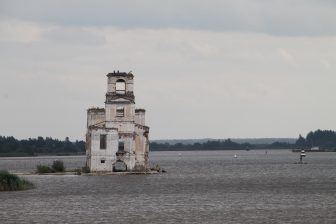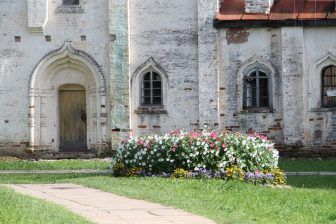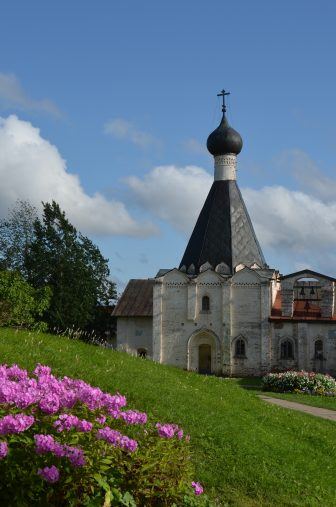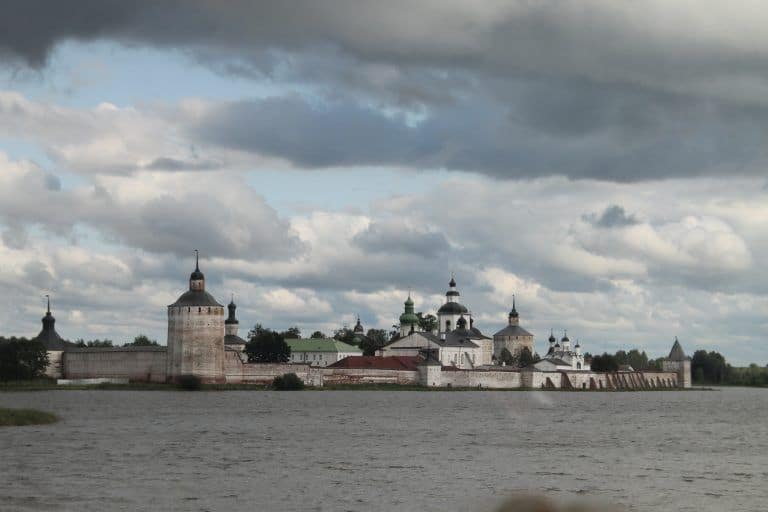
[ Aug.2017 ] Our cruise ship in Russia went on from Lake Onega down south to Lake Beloye.
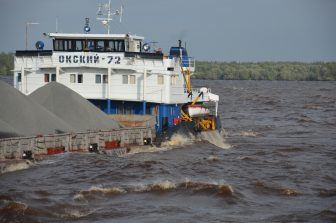 Lake Beloye means ‘white lake’, but the water was muddy brown.
Lake Beloye means ‘white lake’, but the water was muddy brown.
It was at least paler than the water of the Neva River in Saint Petersburg at the beginning of our tour.
When we moved on to the Sheksna River from the lake, we saw a fierce looking ruin of a church standing on the water.
This is the Church of the Nativity built in the 18th century in the town of Krokhino, which went under the water when they developed the Volga-Baltic Waterway in 1960s, which connected the Volga River and the Baltic Sea.
The place we landed was a village called Goritsy.
We were supposed to arrive there at 1:30 pm, but actually we arrived at 2 pm and as soon as we arrived the strong wind and rain started.
So we had to give up our scheduled one hour walk in the village.
Afterwards, we saw the village from the window of our bus and it looked lovely with pretty wooden houses.
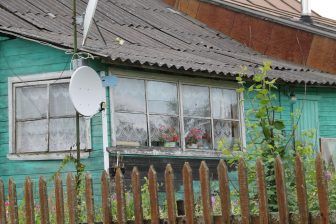
There is a convent in this village where some noble women stayed, who were wives and daughters of some aristocrats who tried to rebel or the wives who were betrayed by their noble husbands who wanted to get married to another woman.
In Russia, it seemed have been a fairly common thing that a man who wanted to marry a different woman sent his first wife off to a convent.
The place we went to by bus was the Kirillo-Belozersky Monastery in Kirillov.
This is one of the largest monasteries in Russia.
When we arrived here, the sky turned deep blue.
The well maintained garden was impressive.
The local guide here was Andrey, who was chubby and looked like a typical Slav.
His way of explaining things was peculiar and he sometimes questioned us, which was not relaxing really.
According to the legend, this monastery was built because St. Cyril who lived in the 14th to 15th century saw the Virgin Mary one day and she told him to build a monastery here.
But according to Andrey, in fact, the Moscow government realised the strategical importance of this area and sent him here at the end of the 14th century.
So, although this place was really a monastery at the same time it was an important fortress.
Within the site, 600 -700 people used to live, 250 of them were monks and the rest were soldiers and craftsmen.
But apparently nobody attacked here.
Currently there are 7 or 8 monks living here.
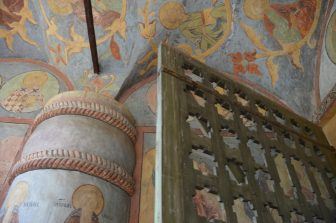
The meaning is that the angel with the scroll write down the sins of the people passing here and the other angel axe them away.
So when you go through here, your sin is purged away and you become a good person.
On the way back when we came to this gate, Andrey asked us ‘So are you feeling you are a better person?” and we had to give a wry smile.

